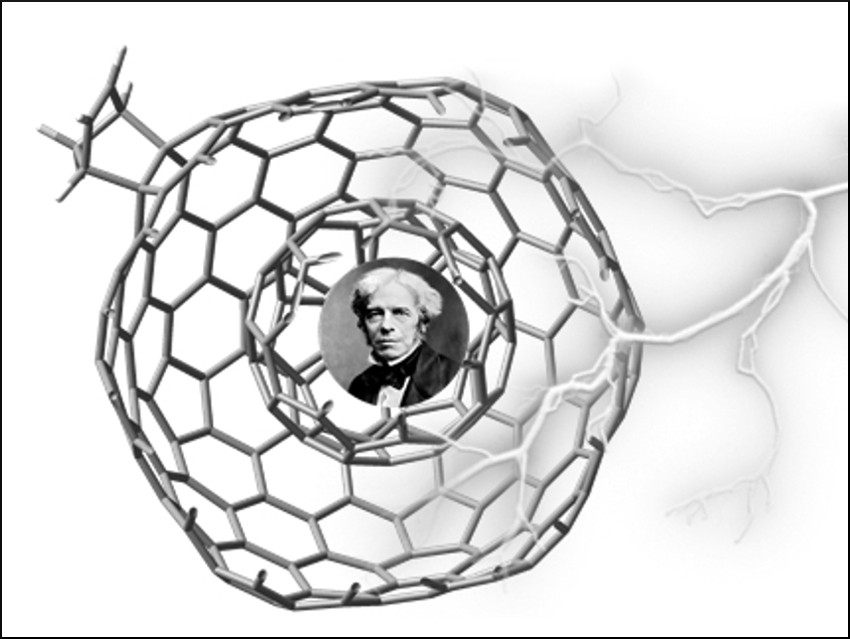A Faraday cage is a container made of a conductive material, such as a wire mesh or metal plates, which protects the inside from external electric fields. Faraday cages serve to protect sensitive electronic equipment against electrostatic discharge. Fullerenes such as C60 have a conductive carbon shell. Carbon nano-onions are nanostructures consisting of concentric layers of fullerenes, like the layers of an onion. Could a fullerene cage or a carbon nano-onion, thus, act as a perfect Faraday cage?
Miquel Solà, Albert Poater, and Jesús Antonio Luque‐Urrutia, University of Girona, Spain, have analyzed the chemical reactivity of the fullerene C240 and one of the smallest nano-onions, C60@C240, both with and without an encapsulated lithium ion. The reaction the team studied is a Diels-Alder cycloaddition between the cage and cyclopentadiene. The reactivity of the fullerenes in this type of transformation is generally enhanced by an encapsulated cation. This allowed the team to test for shielding effects of the fullerene cages. They used density functional theory (DFT) calculations to investigate the reactions.
If there is an electric charge inside a Faraday cage, it creates the same electric field outside the cage as if the cage was not there. The field is only affected inside the cage. Thus, if C60 behaves as a perfect Faraday cage, the reactivity of Li+@C240 and that of Li+@C60@C240 should be the same, because the electric field generated by Li+ on the C240 shell should be the same in both cases.
However, the results of the computational study show that Li+@C240 is significantly more reactive than Li+@C60@C240 in the cycloaddition. That means that the inner C60 fullerene in Li+@C60@C240 partially shields the effect of the electric field created by Li+. This led the researchers to conclude that the fullerenes in this carbon nano-onion do not behave like perfect Faraday cages.
- Do Carbon Nano-onions Behave as Nanoscopic Faraday Cages? A Comparison of the Reactivity of C60, C240, C60@C240, Li+@C60, Li+@C240, and Li+@C60@C240,
Jesús Antonio Luque‐Urrutia, Albert Poater, Miquel Solà,
Chem. Eur. J. 2019.
https://doi.org/10.1002/chem.201904650




